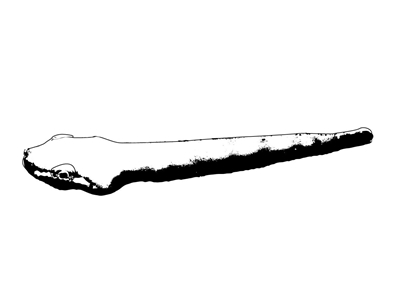General Description
Body moderately long, slender, head flattened; dorsal and anal fins short-based, set far back on body, anterior dorsal fin-rays with fleshy basal swellings; tail base prominent; pelvic fins united to form a small sucking disc on the underside; snout short, flattened, wider than long, mouth small. Body olive to dark green or greenish brown, usually with a line of dark spots along midline of back, scattered pink blotches in sides, and a dark stripe from snout, through eye and onto gill cover. Juveniles with scattered pale spots and a series of darker bars across back. To 3 cm.
Biology
This endemic species is common on shallow weedy reefs and in seagrass beds.
Habitat
Shallow reefs with algae and seagrass beds in depths of 0-10 m.
Reefs
Seagrass meadows
Distribution guide
Southern Australia.
Species Group
Fishes › Clingfishes and shore-eels
Depth
Water Column
Max Size
3 cm
Commercial Species
No
Global Dispersal
Native to Australia
Identify
Conservation Status
- DSE Advisory List : Not listed
- EPBC Act 1999 : Not listed
- IUCN Red List : Not listed





